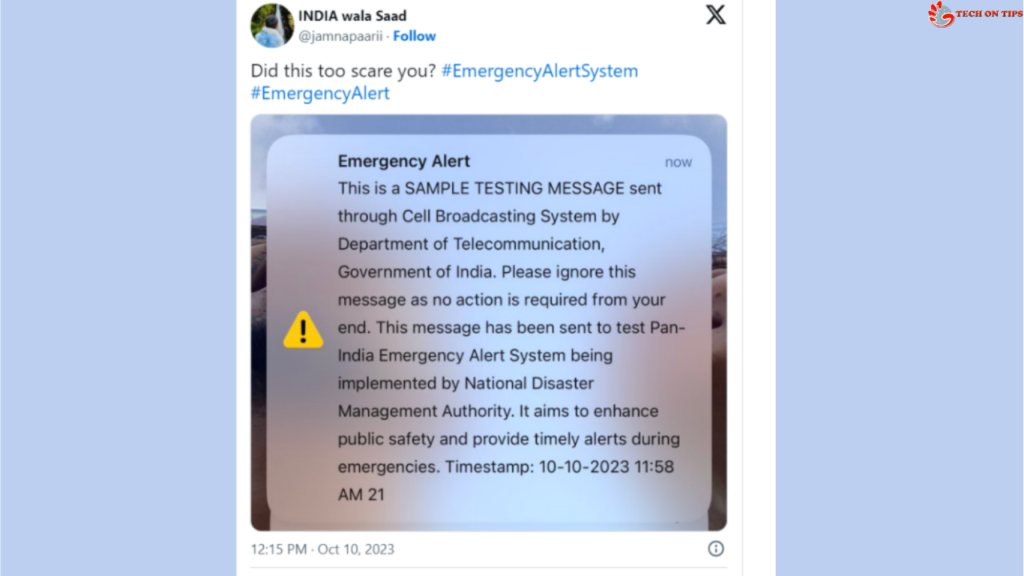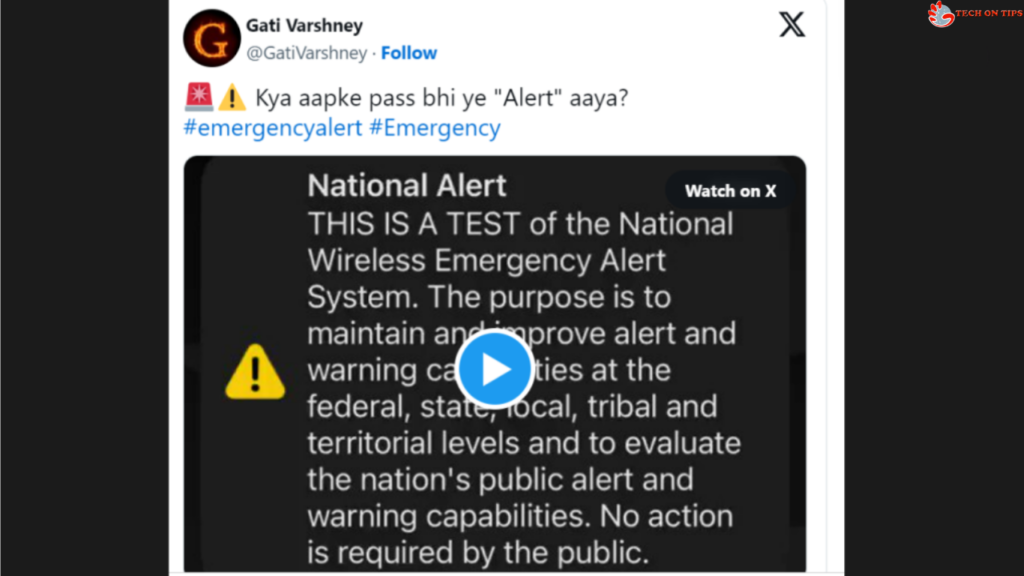Emergency messages recently flooded India, shocking and confusing many smartphone users. The public has been divided and occasionally perplexed by these notifications, which the government sent to test a new emergency alert system. The purpose of these emergency notifications, their function, and their meaning are all covered in this article.
Making Sense of the Emergency Alert
A vital warning concerning a current or approaching calamity or tragedy is transmitted to a large audience as an emergency alert. These warnings are crucial for warning people about potential risks, giving them safety advice, and occasionally issuing orders to evacuate or shelter in place.

Emergencies Covered by Types
Natural disasters like hurricanes, earthquakes, and floods as well as man-made crises like terrorist attacks or industrial mishaps are all covered by emergency notifications. An emergency alert’s text often includes details about the sort of incident, its location, suggested responses, and the anticipated length of the event. Authorities employ a number of communication channels, such as wireless emergency alerts (WEA) on mobile phones, emergency alert systems (EAS) on television and radio, and public address systems in public places, to ensure the prompt delivery of these notifications.
How to Understand the Emergency Alert System in India
The National Disaster Management Authority (NDMA) in India has deployed a new emergency warning system, which has been blamed for the current spate of emergency alerts. This is a SAMPLE TESTING MESSAGE delivered by the Department of Telecommunication, Government of India, using the Cell Broadcasting System, according to the indication. As there is nothing you need to do, please disregard this message.
The National Disaster Management Authority (NDMA)’s TEST Pan-India Emergency Alert System has received this communication. It aims to improve public safety and offer prompt alerts in times of need. These warnings are intended to evaluate the effectiveness of the technology and increase public understanding of the system’s potential. Both Hindi and English were used to distribute the signage, ensuring that they were widely accessible.
Public Response and Issues
Although these notifications aim to improve public safety, they have generated debate. Some mobile users have voiced worries about the alarm’s abruptness and the messages’ circumvention of handsets’ silent modes. Discussions on how this would affect daily life and whether or not recipients will consider these warnings to be spam have resulted.
The user experience may be hampered by the notifications, especially if they receive numerous messages, it has also been feared. Examined as well is the government’s role in developing the technology of this new system.
The Alerts’ Technology
The Centre for Development of Telematics (C-DOT) in-house created the emergency cell broadcast technology that NDMA is testing. This technology was previously only sold by foreign companies. During calamities, this method is intended to transmit notifications directly to mobile phone screens, ensuring that citizens obtain crucial information in a timely manner. The technology is being developed and tested on networks like Jio and BSNL, according to C-DOT CEO Rajkumar Upadhyay. To be transmitted across telecom networks, several versions of cell broadcast messages must be created.
The Cell Broadcast Alert System’s Greater Picture
These emergency announcements are a component of India’s larger “Cell Broadcast Alert System.” The goal is to deliver crisis notifications in real time, such as tsunamis, flash floods, earthquakes, etc. This mechanism was put in place by the government to improve public safety in times of crisis. The tests, carried out with the assistance of several telecom service providers, are intended to assess the effectiveness and efficiency of emergency alert broadcasting capabilities. Modern technology is used by the Cell Broadcast Alert System to send critical disaster management alerts to all mobile devices within a given region. It ensures the widespread and prompt dissemination of important emergency information that emergency services and governmental organizations employ to notify the public during urgent situations.
While the recent notifications have sparked debate and raised worries, their larger goal is to improve India’s ability to handle emergencies and ensure the safety of its population.
Conclusion
While emergency alerts on your phone can be shocking, they are essential for keeping you safe in times of crisis. Although they may occasionally cause annoyances, these alerts are an essential tool for disseminating valuable information and were ultimately created with your safety in mind.

FAQs
What should I do if I get a phone emergency alert?
Follow the directions in the message that are particular to the emergency or circumstance when you receive an emergency_alert. It’s crucial to heed the warning and take appropriate action.
Why do emergency alarms occasionally ignore the smartphone’s mute mode?
The purpose of emergency_alerts is to draw your attention, and they override silent mode to make sure you receive them even if your phone is muted.
Are only man-made calamities the subject of emergency alerts?
No, emergency_alerts include a wide range of emergencies, such as man-made crises, natural disasters, and other urgent situations requiring public warning and safety advice.
Who in India issues emergency alerts?
The National Disaster Management Authority (NDMA) and other pertinent governmental organizations in India issue emergency notifications.
How can I keep up with updates to India’s emergency alert systems?
Check official government websites frequently and follow pertinent news sources to stay up to speed on emergency alert systems and updates in India. For your safety and awareness, it’s crucial to stay current on these systems.










